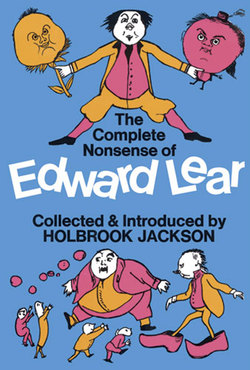Читать книгу The Complete Nonsense of Edward Lear - Edward Lear - Страница 20
На сайте Литреса книга снята с продажи.
14
ОглавлениеBut as he is not content with being a punster, he quickly enters into the fun of any verbal trick new or old, and when Charles Dickens popularises Wellerisms, Lear becomes an easy convert to that once fashionable kind of humour: ‘On the whole, as the morbid and mucilaginous monkey said when he climbed up to the top of the Palm-tree and found no fruit there, one can’t depend upon dates.’ The vocabulary of Sam Weller is also exploited in ‘viddy’ for ‘widow’, and ‘wurbl’ for ‘verbal’, and among other Cockneyisms such mispronunciations as ‘chimbly’ (chimney) and ‘suddingly’, recall Mrs. Gamp.
Phonetic spelling plays a considerable part in many of his nonsense words, and often a complete effect is obtained by this process as in ‘yott’ (yacht), ‘rox’ (rocks), ‘korn’ (corn), and ‘toppix’ (topics). He is better, however, in distortions like ‘buzzim’ (bosom), ‘omejutly’ (immediately), ‘pollygise’ (apologise), ‘spongetaneous (spontaneous), ‘mewtshool’ (mutual), ‘gnoat’ (note), ‘fizzicle’ (physical), ‘fizziognomy’ (physiognomy), and ‘phibs’ (fibs).
He weds the ‘n’ or ‘an’ with the next word, as ‘a narmchair’, ‘a nemptystummuk’, ‘a noppertunity’, ‘sill kankerchief’, and indulges in the superfluous aspirate, as ‘hempty’. Sometimes he translates whole sentences into nonsense-spelling, as ‘I gnoo how bizzy u were’, or ‘witch fax I only came at granuously’, or ‘phits of coffin’ or ‘sombod a nokking at the dolorous door’, or ‘vorx of hart’, and reports that he has ‘become like a sparry in the pilderpips and a pemmican on the housetops’, which reads like an excerpt from Finnegans Wake! He likes an absurdity such as ‘sufficient unto the day is the weevil thereof’, and in ‘Mary Squeen of Cots’ he anticipates the verbal inversion known later as a Spoonerism. The fun reaches a climax when inflation is added to distortion and his imagination bodies forth a portmanteau-word of no less than thirty-one letters like splendidophorophero-stiphongious, to express his satisfaction with a dinner-party.
It is none of these verbal adventures, however, that reveal Edward Lear at his best as a word-maker. In the examples I have given he is doing little more than amusing himself and his friends by following a fashion of the moment for that sort of thing, although his success indicates both a natural gift for word-building and a need for that kind of expression. His inventiveness is extraordinary and what nearly always begins as fun often ends in an extension of the boundaries of expression. His imagination is always at its best when it has some concrete form or idea for its objective. This is proved by the nomenclature of his nonsense creatures. In this realm he has only one peer—Lewis Carroll. But where the creator of Alice has some half dozen masterpieces to his credit such as the Jabberwock, Bandersnatch, Snark and Boojum, Lear has a whole zooful of distinguished creatures many of which, like the Pobble and the Quangle Wangle, have become common objects of the popular imagination.
